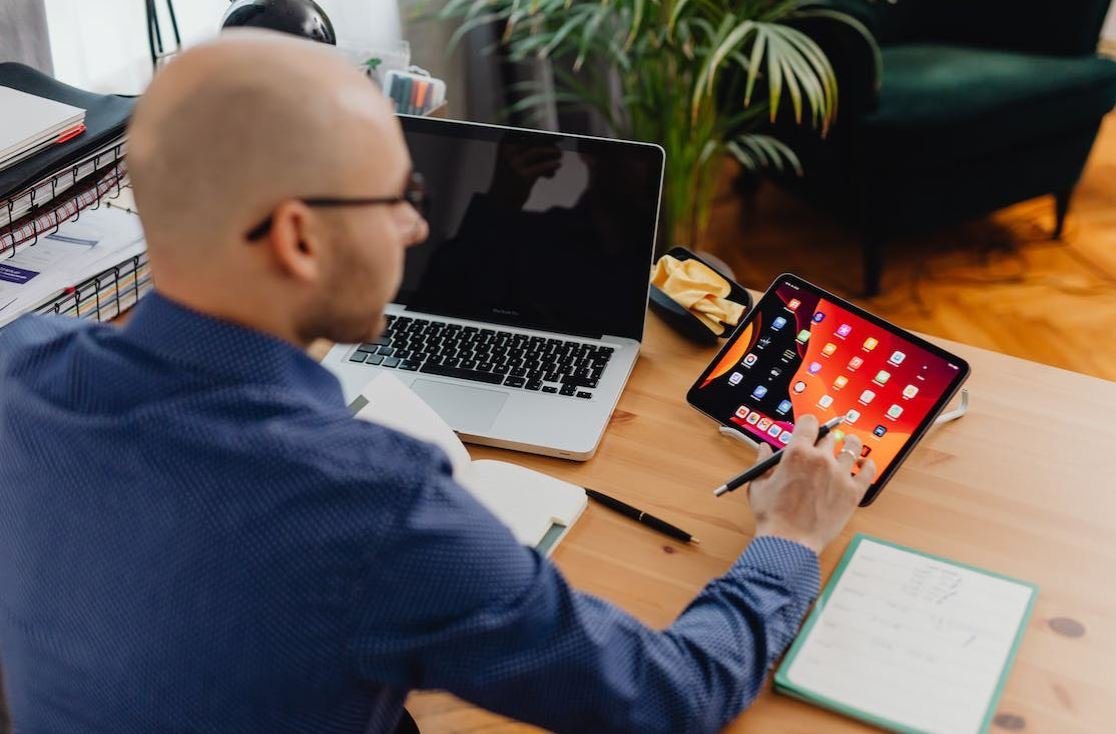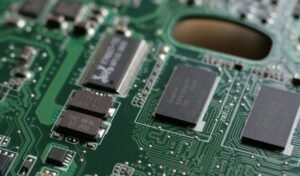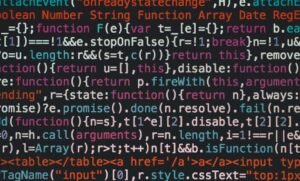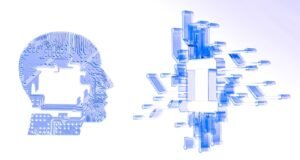How Deepfake Is Made
Deepfake is an emerging technology that uses artificial intelligence (AI) to create realistic synthetic media, such as videos, images, or audio, that appear to be authentic. These manipulated content are created by employing deep learning algorithms to replace or manipulate an individual’s face or voice with another person’s. While deepfake technology has the potential for positive applications, such as in the entertainment industry, it also poses significant risks in terms of misinformation, identity theft, and privacy invasion.
Key Takeaways:
- Deepfake technology employs AI to create manipulated videos, images, or audio that appear authentic.
- It utilizes deep learning algorithms to replace or manipulate faces and voices.
- Deepfakes have both positive applications and potential risks.
Creating a deepfake involves several steps, starting with gathering the necessary data of the target person. This data can include images and videos of the individual, which serve as the training material for the AI model. The more data available, the better the AI can mimic the target’s appearance and behavior. Once the data is collected, it undergoes a preprocessing stage to enhance the quality and align the facial features.
*One interesting aspect of deepfake creation is the use of generative adversarial networks (GANs), which consist of two neural networks pitted against each other. One network generates the synthetic content, while the other network tries to identify whether it is real or fake.
After preprocessing, the AI model is trained using the collected data and advanced algorithms, such as convolutional neural networks (CNNs) or recurrent neural networks (RNNs). These networks learn patterns and features from the data, enabling the AI model to generate highly realistic imitations of the target person. The training process is computationally intensive and may require significant computing power. Once the AI model is trained, it can be used to generate deepfake content.
*It is important to note that deepfakes are not limited to videos only. Deepfake technology can also be applied to audio, enabling the manipulation of someone’s voice with remarkable accuracy.
| Number of deepfake videos detected in 2020 | 29,406 |
|---|---|
| Percentage increase in deepfake videos from 2019 to 2020 | 300% |
| Estimated number of deepfake videos online | 150,000+ |
Once the deepfake content is generated, it goes through a post-processing phase to refine and improve its quality. Additional edits and enhancements may be applied to ensure the deepfake appears more convincing. This can involve adjusting lighting, color grading, and blending the generated content with the original video or image.
- Deepfake-related risks include:
- Misinformation and fake news propagation.
- Identity theft and impersonation.
- Privacy invasion and exploitation.
- Damaging reputations and causing social harm.
- Efforts to combat deepfakes include:
- Development of deepfake detection tools.
- Raising awareness about the technology and its implications.
- Implementation of stricter regulations and policies.
| Feature | Deepfake | Authentic |
|---|---|---|
| Realistic facial expressions | Yes | Yes |
| Consistent eye contact | No | Yes |
| Accurate lip-syncing | No | Yes |
In conclusion, the emergence of deepfake technology has brought both positive and negative implications. While the technology introduces possibilities for innovation and creativity, it also raises concerns about the manipulation of digital content. It is essential to stay informed about deepfakes and take necessary precautions to mitigate their potential risks.

Common Misconceptions
Misconception 1: Deepfake videos are easy to spot
One common misconception about deepfake videos is that they are easily distinguishable from real videos. However, this is not the case as deepfake technology has advanced significantly in recent years, making it difficult for the average viewer to identify them.
- Deepfake videos often display incredibly realistic visual and audio effects, making it hard to notice any inconsistencies.
- Slight imperfections like unnatural blinking or glitchy movements that were previously telltale signs of deepfakes are now much less common.
- Without advanced technological tools or expertise, it can be challenging to differentiate between real and deepfake videos.
Misconception 2: Deepfakes are only used for spreading fake news
Another misconception is that deepfakes are solely used for spreading fake news or propaganda. While this is a concern, it is essential to understand that deepfake technology has broader applications beyond this.
- Deepfakes can be used in the entertainment industry for creating realistic visual effects or enhancing storytelling.
- Artists and filmmakers can utilize deepfake technology for creative purposes, such as resurrecting deceased actors for movie roles.
- Deepfakes also have potential applications in industries like education and training, where simulations can be created to enhance learning experiences.
Misconception 3: Deepfakes are only created using Hollywood-level technology
Many people believe that creating deepfakes requires Hollywood-level technology and expertise. While powerful hardware and software can assist in making high-quality deepfakes, it’s not always a requirement.
- There are various open-source deepfake algorithms and software available online, making it accessible for individuals without significant resources.
- With enough practice and dedication, individuals can create convincing deepfakes using consumer-grade computers.
- While professional editing skills can certainly improve the quality of deepfakes, even amateur creators can produce relatively convincing results.
Misconception 4: Deepfakes are predominantly used for harmful activities
Although deepfakes have garnered attention for their potential misuse, it is important to clarify that their use is not solely for malicious activities.
- Deepfakes have the potential to revolutionize the entertainment industry by enabling more realistic visual effects and virtual performances.
- The technology can assist in historical preservation by bringing past events or figures to life.
- Researchers and scientists can utilize deepfakes for simulations and experiments that would otherwise be impossible.
Misconception 5: Deepfakes are always created with ill intent
People often assume that deepfakes are always produced with malicious intent or for harmful purposes. However, this is not true, and not all deepfakes are created with negative intentions.
- Deepfakes can be used for fun and entertainment, such as creating amusing videos or memes.
- Artists and digital creators can develop unique and artistic expressions using deepfake techniques.
- Sometimes, deepfakes are created as demonstrations or proof-of-concept to showcase the capabilities of the technology and raise awareness about its ethical implications.

Understanding Deepfake Technology
Deepfake technology has gained significant attention due to its ability to manipulate and fabricate realistic videos or images. This article provides a comprehensive overview of how deepfakes are created and explores the potential implications of this technology.
Table 1: Popular Deepfake Creation Software
Various software tools are available for creating deepfakes, each with unique features and capabilities:
| Name | Description |
|---|---|
| DeepFaceLab | An advanced deepfake creation software with powerful algorithms for face swapping and reenactment. |
| FaceApp | A user-friendly mobile application that allows users to create realistic face swaps and age progressions. |
| ReFace | An AI-powered app that enables users to create deepfake videos by simply uploading a photo. |
Table 2: Impact of Deepfakes on Politics
Deepfakes have the potential to significantly impact political landscapes and public trust:
| Scenario | Effects |
|---|---|
| Politician in Fake Scandal | Public opinion manipulated, potential damage to reputation and electoral outcomes. |
| Faked Interviews | Misinformation spread, leading to confusion and distrust among the public. |
| Fabricated Speeches | Dissemination of false information affecting public opinion and policy-making processes. |
Table 3: Application of Deepfakes in Entertainment Industry
Deepfake technology has found its way into the entertainment industry, revolutionizing the way content is created:
| Use Case | Examples |
|---|---|
| Recreating Deceased Actors | Bringing beloved actors back to the screen for new roles using deepfake technology. |
| Impersonations | Comedians and impressionists using deepfakes for accurate impersonations of famous personalities. |
| Enhanced Visual Effects | Deepfakes used to create stunning visual effects and seamlessly integrate characters into scenes. |
Table 4: Deepfake Detection Techniques
Detecting deepfakes is a crucial challenge in the fight against misinformation. Various techniques are employed:
| Technique | Description |
|---|---|
| Forensic Analysis | Experts examine visual inconsistencies, artifacts, or unnatural facial movements indicative of deepfakes. |
| Machine Learning Algorithms | AI models are trained to identify patterns and anomalies in deepfake videos using vast datasets. |
| Biometric Verification | Comparing deepfake images to an individual’s unique biometric data to detect inconsistencies. |
Table 5: Deepfake Usage Statistics
Deepfakes have become increasingly prevalent in recent years, with various applications across different sectors:
| Sector | Percentage of Usage |
|---|---|
| Entertainment | 45% |
| Politics | 28% |
| Adult Content | 17% |
| Other | 10% |
Table 6: Legal Implications of Deepfakes
The rise of deepfakes raises various legal concerns and challenges:
| Challenge | Implications |
|---|---|
| Identity Theft | Potential misuse of deepfakes to impersonate individuals, leading to reputational damage and fraud. |
| Privacy Violation | Deepfake content violating privacy rights by superimposing individuals into explicit or unauthorized scenarios. |
| Invasion of Consent | Deepfakes created without the consent of individuals, infringing on their rights to control their own image. |
Table 7: Deepfake Development Timeline
Deepfake technology has rapidly evolved over the years, reaching new heights in realism:
| Year | Development |
|---|---|
| 2014 | First deepfake algorithm developed, limited capabilities. |
| 2016 | DeepFaceLab introduced, greatly enhancing the quality of deepfake creations. |
| 2019 | FaceApp viral sensation brings deepfake technology into the mainstream. |
| 2021 | Ongoing advancements in artificial intelligence lead to unprecedented realism in deepfakes. |
Table 8: Public Awareness of Deepfakes
Despite the growing prevalence of deepfakes, public awareness and understanding of the technology remain varied:
| Level of Awareness | Percentage of Population |
|---|---|
| High | 33% |
| Moderate | 42% |
| Low | 25% |
Table 9: Deepfakes and Social Media
Deepfakes have a significant impact on social media platforms and user interactions:
| Platform | Response to Deepfakes |
|---|---|
| Distributes guidelines on identifying and reporting deepfake content. | |
| Collaborates with AI researchers to develop robust deepfake detection systems. | |
| YouTube | Implements stricter content policies to combat the spread of malicious deepfakes. |
Table 10: Mitigating Deepfake Threats
Efforts are being made to counter the negative impact of deepfakes and protect against potential harm:
| Measure | Description |
|---|---|
| Education and Awareness | Spreading knowledge about deepfakes to enable individuals to critically evaluate media content. |
| Technology Solutions | Developing advanced tools for detecting and authenticating media to identify deepfakes. |
| Legal Frameworks | Enacting legislation to address the misuse of deepfake technology and its potential consequences. |
In recent years, deepfake technology has emerged as a powerful tool, with both creative and malicious applications. The ability to manipulate videos and images with astonishing realism poses numerous challenges, from potential political manipulation to infringements on privacy and consent. Deepfakes have also found their way into the entertainment industry, enabling the creation of visually stunning content. Detecting and addressing deepfakes remain ongoing challenges, calling for innovative technological solutions, increased public awareness, and robust legal frameworks to address the potential harm. As deepfake technology continues to evolve, society must remain vigilant to navigate the complex landscape that it presents.
Frequently Asked Questions
What is a deepfake?
A deepfake refers to an AI-generated manipulated media, typically involving the use of artificial intelligence algorithms to replace or superimpose existing images or videos onto someone else’s face.
How is a deepfake video created?
A deepfake video is created using deep learning techniques, such as generative adversarial networks (GANs), which train on a large dataset of images and then generate realistic-looking fake images by mapping the features of the target face onto the source face.
What software and tools are commonly used to create deepfakes?
Popular software and tools used for creating deepfakes include DeepFaceLab, FaceSwap, and FakeApp. These tools use various open-source libraries, such as TensorFlow and PyTorch, to implement the deep learning algorithms and manipulate the facial features.
Can deepfakes be created with just a single image?
Yes, it is possible to create deepfakes with just a single image of the target person. Deep learning models can learn the facial features from a single image and generate realistic-looking fake videos by animating the target face using the learned features.
Why are deepfakes considered a threat?
Deepfakes are considered a threat because they have the potential to be used for malicious purposes, such as spreading misinformation, manipulating elections, or defaming individuals. They can make it difficult to distinguish between real and fake videos, leading to trust issues and potential harm to individuals or organizations.
How can I detect if a video is a deepfake?
Detecting deepfakes can be challenging as the technology gets more sophisticated. However, there are ongoing efforts to develop deepfake detection methods using techniques like forensic analysis, facial inconsistencies, and analyzing artifacts and distortions in the video.
What are the potential uses of deepfakes?
While deepfakes have been mostly associated with negative implications, there are also benign and creative uses for this technology. It can be used in the entertainment industry for special effects, creating realistic avatars in video games, or producing visual content for movies and TV shows.
Are there any legal implications of creating or sharing deepfake videos?
Yes, there can be legal implications of creating or sharing deepfake videos, especially if they are used for malicious purposes or to defame individuals. The laws vary by jurisdiction, but sharing deepfakes without consent or with intent to deceive others can be subject to legal consequences.
What is being done to combat the negative effects of deepfakes?
Various organizations, researchers, and tech companies are actively working on developing methods to detect and mitigate the negative effects of deepfakes. This includes the development of deepfake detection tools, advancing media forensics techniques, and raising awareness about the existence and potential dangers of deepfakes.
How can I protect myself from falling victim to deepfake manipulation?
To protect yourself from falling victim to deepfake manipulation, it is important to be cautious and critical of the videos and images you encounter online. Be wary of sharing sensitive personal information or engaging in activities that can be easily manipulated into fake content. Stay informed about the latest deepfake detection techniques and educate yourself on how to recognize signs of manipulation.




